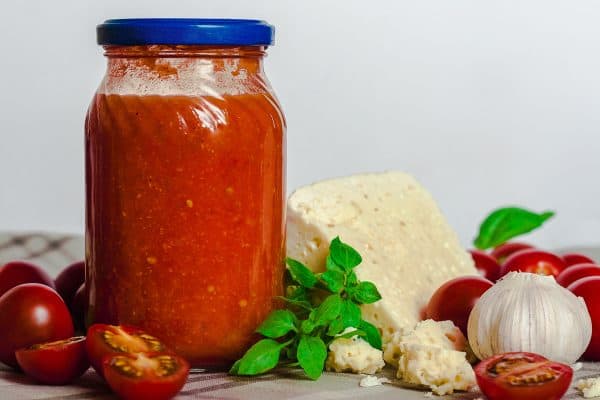For those who are into commercial trading of beef or who own restaurants, purchasing large amounts of beef is more economical. Buying beef in bulk for home consumption is much cheaper. Once you have gotten your beef from your supplier, you must store it carefully. What size chest freezer would be ideal for 1/4, 1/2, or a whole cow? We've researched this question in depth, and here's what we found out.
The required chest freezer capacity is determined by the amount of beef from 1/4, 1/2, or a whole cow. Ideally, you should have the following freezer sizes:
- 1/4 cow: 4 cubic feet
- 1/2 cow: 8 cubic feet
- Whole cow: 16 cubic feet
Continue reading to see into what parts and sizes the beef is cut. The post will also discuss the storage of different types of beef cuts as well as the packaging.
NOTE: WE MAY GET A COMMISSION IF YOU DECIDE TO MAKE A PURCHASE THROUGH THESE LINKS. THERE'S ADDITIONAL NO COST TO YOU. CHECK THE BOTTOM OF THE PAGE FOR MORE INFORMATION.
![Portioned frozen meats in a home freezer, What Size Chest Freezer For 1/2 A Cow? [Also For Whole And 1/4]](https://forfreezing.com/wp-content/uploads/2021/09/What-Size-Chest-Freezer-For-Cow-800x1200.png)
The Right Chest Freezer Size For Half A Cow
You will know the chest freezer size you need after being able to estimate the amount of beef you will get from a 1/4, 1/2, or a whole cow. One cubic foot freezer space should be enough for around 35 pounds of cut and wrapped cow meat.
The amount of beef you'll get from a 1/4 cow is approximately 100 pounds of meat. After removing excess fat and bones, and grinding some percentage of the beef, you should have about 80-90 pounds.
A 4 cubic ft. chest freezer that holds about 85 pounds of food will be suitable. Therefore, 1/2 a cow will fit in an 8 cubic ft. chest freezer, while a whole cow will fit in a 16 cubic ft. one.
Cuts And Weight Of The Beef

The beef comes in different cuts and varies in weight. These pieces and cuts have different names and are packaged for different durations. The weight may differ due to the presence or absence of bones in that particular piece of beef.
Beef Cuts
From a cow, you should expect to get primal and sub-primal cuts. Primal cuts include loin, rib, chuck, round, flank, sirloin, brisket, and short plate.
Later, these primal cuts can be cut into sub-primal cuts which are smaller in size. Some examples of sub-primal cuts are top round, whole tenderloin, ribeye, etc.
Beef Sizes
Primal cuts are heavy, and storing them may require a walk-in cold room or a commercial freezer room. The weight of primal cuts is a given percentage of the total weight of the cow.
However, the sizes of sub-primal cuts could weigh from 1 to 10 pounds. The size of these cuts can be determined by the number of beef-consuming adults. Meaning that you store cuts that are enough for a meal.
Note: Somes parts of a cow can be stored for long periods such as months or years. Whilst other parts need to be consumed within a matter of days.
Space, Packaging, And Temperature
You should allocate at least a cubic foot for 35 pounds of meat. You must allow cold air to circulate well in the freezer. Don't overload your freezer to avoid temperature fluctuation.
Another important aspect is proper packaging. Proper handling of beef while packing it for storage is compulsory. Use clean surfaces and sterilized packaging. Pat dry the beef before packing it. Remember to label all packed beef.
You must pack the pieces of beef in airtight heavy-duty Ziploc bags. You can also vacuum wrap the beef for better results. Properly package beef can stay up to 12 months in the freezer. Proper packaging protects your beef from freezer burns.
The video below shows you how to correctly pack beef for long-term freezer storage:
For long-term storage in a chest freezer, the recommended temperature is between 28 degrees Fahrenheit (-2 degrees Celsius) and 32 degrees Fahrenheit (0 degrees Celsius).
This temperature range must be maintained at all times. It is therefore advisable to have a chest freezer that is designated solely for storing large amounts of beef.
How Much Meat Do You Get From 1/2 A Cow?
From 1/2 a cow you will get a total of approximately 200 to 220 pounds of beef. The amount of ground beef will be 40 to 45 percent of the total weight.
The other beef should give you 20 to 25 percent of steaks, 20 to 25 percent of roasts, and 10 to 15 percent of other cuts.
Therefore, from a 220 pound 1/2 cow, 100 pounds should be ground beef and 120 pounds should be steaks, roasts, tenderloin, flank, and other cuts.
Each of these cuts should be wrapped individually before storage. Label and lay the cuts flat in your chest freezer.
How Much Meat Do You Get From A 1/4 Cow?
Having bought a 1/4 cow, you might be wondering what types of cuts can you get from it. There are several different cuts of beef you should expect from a 1/4 cow.
The weight of the cuts differs immensely. From a 1/4 cow, you should get an average of 100 pounds of beef.
These are the cuts and expected weights:
- 4 New York strip steaks and 4 mignon (filet) or 4 T-Bone steaks - 8 lbs
- 4 ribeye steak or 1 prime rib roast - 7 lbs
- Boneless stew meat - 2 lbs
- Sirloin steak or 2 club steaks - 4 lbs
- 8-pack round steak or 12-15 packs of cube steaks - 8 lbs
- 4 chuck pot roasts -17 lbs
- 1 rump roast - 3 lbs
- Short ribs - 3 lbs
- Brisket - 1 lbs
- Soup bones - 2 lbs
- Ground beef - 30 lbs
- Tenderloin - 1 lbs
- Stir-fry or fajita steak - 2 lbs
The weight of the above parts may vary depending on the size of the particular cow. This is due to the size of bone or lack thereof in a particular piece.
Is Buying A 1/4 Cow Worth It?
Yes, it's worth it! Buying in bulk from suppliers leaves you with more meat. This is because the beef cut for retail is cut and packaged in a manner that the seller gets a profit.
When you purchase a 1/4 cow, you are able to get more. The sizes of your cuts will be determined by the number of your family members.
How Much Meat Do You Get From A Whole Cow?
The entire cow gives large cuts which are known as primal. These main cuts are straightforward and can be further cut into smaller pieces. The cuts you'll get from a whole cow are:
- Chucks
- Shank
- Loin
- Tenderloin
- Brisket
- Round
- Ribs
- Plate
- Steaks
- Roasts
From a 440 pound cow, you should get approximately 220 pounds of beef cuts and 200 pounds of ground beef. The other parts of the cow such as kidneys, tongue, liver, kidneys, and ox-tail are known as variety meats.
These variety meats are handled differently from the other beef. They must be consumed ASAP. The video below demonstrates how the different beef parts mentioned are set aside:
Is Buying Half A Cow Worth It?
Yes, buying half of a cow is worth it! The prices of the cuts will be relatively cheaper than buying in retail.
To get a worthwhile purchase, it's best to go to a rancher. From a cow of 220 pounds, you can get 100 pounds of ground beef and 110 pounds of beef cuts.
How Long Does A Cow Last In The Freezer?
According to USDA food safety storage recommendations, the amount of time you can store beef is indefinite. This is possible, of course, if the temperature in the freezer is constant and the beef has been properly packed.
Although, if you want better tasting beef, uncooked steaks, roasts, and chops, should be stored for up to 12 months. For other uncooked beef such as ground beef, storage should be up to 4 months. Long-term storage makes beef lose its taste and texture.
In Closing
To store your beef properly, you'll need a chest freezer that is suitable in size. The chest freezer should be large enough to hold the amount of beef intended for storage if you don't have a designated chest freezer.
A half cow fits well in an 8 cubic ft. chest freezer and leaves ample room for ventilation.
Before storage, handle and pack your beef carefully. Ensure that the chest freezer meant for storage has a constant temperature. Cuts and pieces of beef that can stay longer should be kept at the bottom of the freezer (in freezer baskets).
When you purchase large amounts of beef, you save a lot. Now, all you need are recipes for all the meat in your chest freezer! Before you start cooking, read through our previous posts:




One thing I see rarely discussed is the amount of thawed meat that should be put in a freezer at one time. Running a service division, we get calls all the time complaining their freezer went out and they “just put 100 lbs of meat in it”!
It is recommended that no more than 2 – 3 lbs of unfrozen meat per cubic foot of freezer place be put in at any 24 hour period. If you buy 100 lbs of meat, it may fit in your 5 cubic foot freezer, but you are likely to not properly freezer the meat or even “kill” the freezer if you put it in all at once. 100 lbs of unfrozen meat should be placed in a 5 cubic foot freezer slowly over a long period of time – slowly over a week or so. One way to overcome this is to have the place that the meat was purchased from freeze the meat for your prior to you taking delivery. A lot of places that butcher and sell bulk meat have a large commercial freezer for this.
If you don’t, you may regret this. As mentioned, this is for food safety (the meat in the center of the mass will not freeze correctly) and to keep your freezer from failing due to overwork.